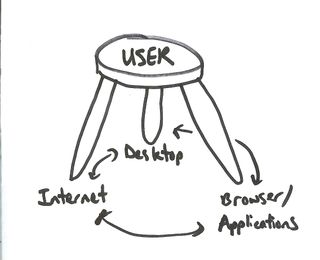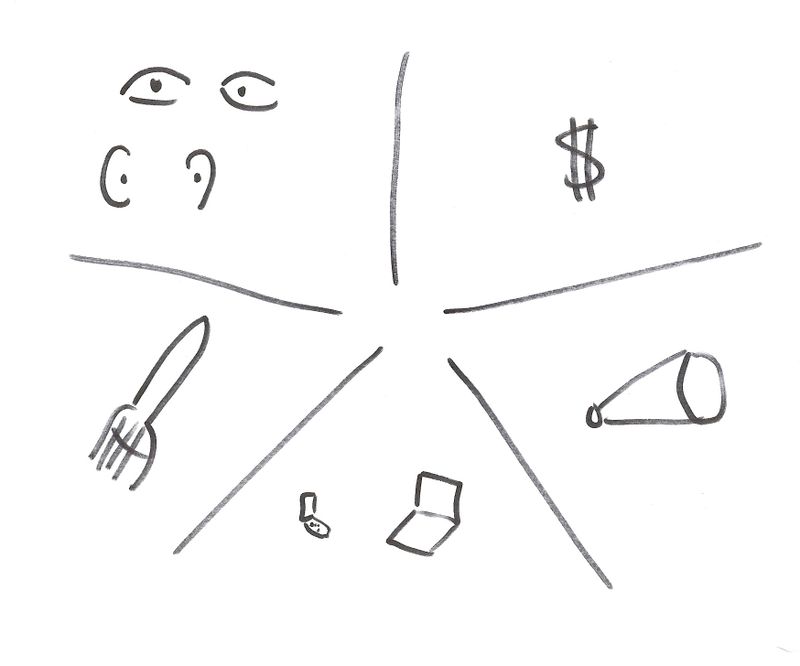OpenSUSE is holding a community week this week, with a GNOME track. Curious as to what that really means, I asked Vincent Untz and Zonker (Joe Brockmeier) some questions. I really like that open source projects often find really new and effective ways to get things done.
There's a openSUSE community week going on right now, what is a community week?
Zonker: Our community week is a chance for experienced contributors to help pass on what they know about packaging, translations, testing/QA, and so forth to newer contributors and mentor them a bit to help them get started. It's also a chance for people to just pop in and meet with a lot of contributors to learn more about the project and ask general questions about the openSUSE Project.
Vincent: It turns out that there are many people out there who are interested in helping but they just don't know how they can help. This is where the community week is really helpful: we introduce people to the various activities that are handled daily by various teams, and we show them how they can contribute to this activities.
How do people join?
Zonker: In the various IRC channels. There are separate channels for the GNOME team, KDE team, marketing team, etc. You can find them all here: http://en.opensuse.org/
Zonker: Hard to say. We've about a dozen openSUSE contributors who will be leading sessions this week, and more who've helped with setting up the schedules and recruit people to lead sessions and so on.
According to the Facebook page we already have about 100 confirmed attendees, and I'm pretty sure that not all of the openSUSE contributors and new contributors use Facebook, so I'd say it's well more than that. Looking at the IRC channels today, I'm seeing quite a few nicks in IRC that are new. I'd say by the end of the week we'll have seen hundreds of people join in sessions across the various topic
areas.
Vincent: Just a (random) data point: in #opensuse-gnome, we generally have around 60 people. When I looked at some point yesterday, we had 80-85 people. That's +33%, which is quite good. Also, it's IRC, so we get people joining and leaving at all time of the day 🙂
Of course, not all of the new faces have time to contribute, but they are able to learn more about the community this way, which can only be a good thing.
(oh, and the not-so-new faces — people who were already on IRC before the community week — are also contributing too)
Vincent: It really depends on the people — some people are investing some of their free time at work, some are not working (students, or people taking vacation). And then we have some interesting cases like Christopher Hobbs: he'll lead the GNOME Bug Day on Friday, and I believe his employer lets him handle this specific event on his work time.
Zonker: For Novell employees, this is part of the job to engage with the community, so I'd have to say "still working," but people doing Community Week should be doing this as part of their normal work. Not all the topic owners are Novell employees, so I can't say whether our other contributors are taking time off or getting time off to do presentations.
Zonker: Primarily, a lot of mentoring and teaching. It happens other times, of course, but this is more of a focused effort.
Vincent: I can confirm this. Based on the past two days, the main difference is that experienced contributors take more time to help newcomers, and newcomers ask more questions.
Zonker: We seem to be getting a fair number of participants so far, so I'm excited by that.
I'm also surprised, but probably shouldn't be, at how many groups are jumping in and setting up sessions of their own — the Samba team, Education team, and the openSUSE Weekly News folks have already
volunteered to do sessions though those topics weren't on the original schedule. Which is, of course, awesome. The more the merrier!
Vincent: One thing that really strikes me is that people are willing to learn. It's not something new, but it's really good to see people curious about things, and experimenting, asking questions, etc. to learn the right things to do.
Also a really good surprise is that the Thunderbird people are planning a Linux testing day this week and coordinated it so it ends up the same day as the GNOME testing day of the community week. So we'll have packages of the latest thunderbird code for people to test. I didn't expect some cross-project effort like this, and I'm quite excited about it 🙂
What's in store for rest of the week?
Vincent: On the GNOME side, we'll have some wiki space reorganization, but most importantly we'll have a testing day on Thursday where we'll get feedback/bugs from people on various features or applications (thunderbird, multiscreen support, probably pulseaudio, also hopefully the new at-spi-dbus code that will be the basis of GNOME 3.0 accessibility, maybe also gnome-shell, etc.). Then we'll have a bug day on Friday where we'll triage the GNOME bugs filed against openSUSE, and forward all the relevant ones upstream.
And of course, people seem to want to package applications, so this will be an area where we'll keep helping people! We plan to have more volunteers this week-end to help mentor, and so we'll see quite some action on Saturday and Sunday in #opensuse-gnome!
Zonker: We have a lot more sessions for packaging, testing/QA,
GNOME, KDE, marketing, and openFate will all be on the schedule. The
openSUSE Board will be holding several sessions Wednesday and Saturday
to meet with contributors and answer questions about the board and to
get
feedback.
Zonker: You can find each of the schedules here: http://en.opensuse.org/
There's still time to join them!


